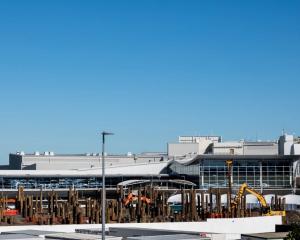
Nearly 17ha of Wellington CBD office floor space spread across 16 separate buildings is now closed to 50 tenants after last month's earthquake, experts says.
Zoltan Moricz, CBRE's New Zealand head of research, and Richard Carr, its research analyst, have released a detailed report showing the scope of the damage and a list of the 16 buildings hit by the Kaikoura quake.
"While the precise scope of damages and their ongoing effects are still being assessed, currently it is believed that 16 buildings comprising 11 percent or 167,300sq m of Wellington CBD's total office building stock, have been closed to occupiers - 47 percent of this space is classified by CBRE as prime quality stock," the report said.
"Across the 16 buildings, there are 50 different tenants," it said, citing IRD with just under 28,000sq m of office space losing the most area.
Some buildings will be out of stock for a few weeks while others will be removed for more than six months.
A list of top tenants affected show major Government entities and big corporates, including Vodafone.
In the past three weeks, there has been a big flurry of activity as large occupiers try to find accommodation while their buildings are shut. BNZ has been the most active, finding new space in six different buildings throughout the city.
"All six locations are within the CBD, representing 11,500sq m which is around 56 per cent of the pre-quake space requirement," the report said.
But some large government occupiers such as IRD and the Ministry for the Environment have not committed to any new space.
"It is currently believed that the Asteron Centre where the majority of IRD is housed will be re-opened just before the end of the year so no substantial leasing will be required but that does not address the space which has been lost in the Deloitte Building," the report said.
Vacancy rates in Wellington will reduce due to the reduction of building stock.
"Investment within the city has slowed which is a predictable response to any natural disaster. Investors are reassessing the market and are unlikely to make any new deals before the end of the year as December is a traditionally slow period," the report concluded.
Building owners must share reports
Wellington City Council's recovery manager officially has the power to make building owners share the results of their building inspections with the council.
Mayor Justin Lester has been given the ability to give notice of a statutory ``local transition period'' for Wellington, which gives recovery manager Mike Mendonca the power to compel building owners to share their information.
Approval for the transition period has been given by Acting Civil Defence Minister Gerry Brownlee under the Civil Defence Emergency Management Act 2002.
``This transition period gives the City Council recovery manager the legal power, if necessary, to compel building owners to obtain assessments of their buildings and provide the results,'' Mr Lester said.
``Wellingtonians need to know that their city is safe. This transition period will help us ensure that we understand the current state of buildings and get a clearer picture of the state of buildings following any major aftershocks.''
But the investment freeze is expected to be short lived. More relocations of Wellington CBD office tenants this month are predicted as tenants learn more about how their buildings performed in the earthquake, how shut buildings will remain closed and how extensive future strengthening programmes will be, the CBRE report said.












